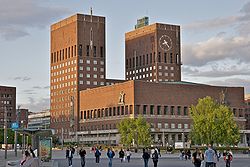This is a list of city and town halls. Buildings used as the seat of local government are in this context classed as city or town halls.












Each province, municipality, city and district has a People's Committee (executive) and a People's Council (legislative) For example: